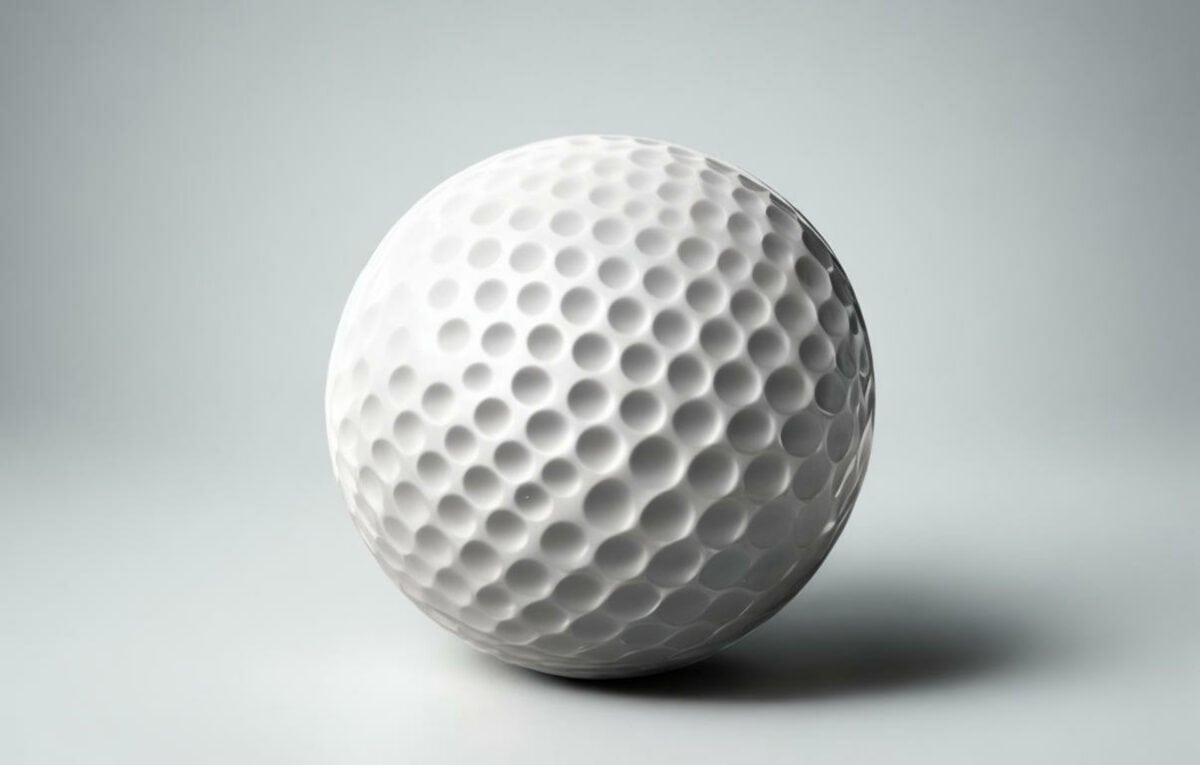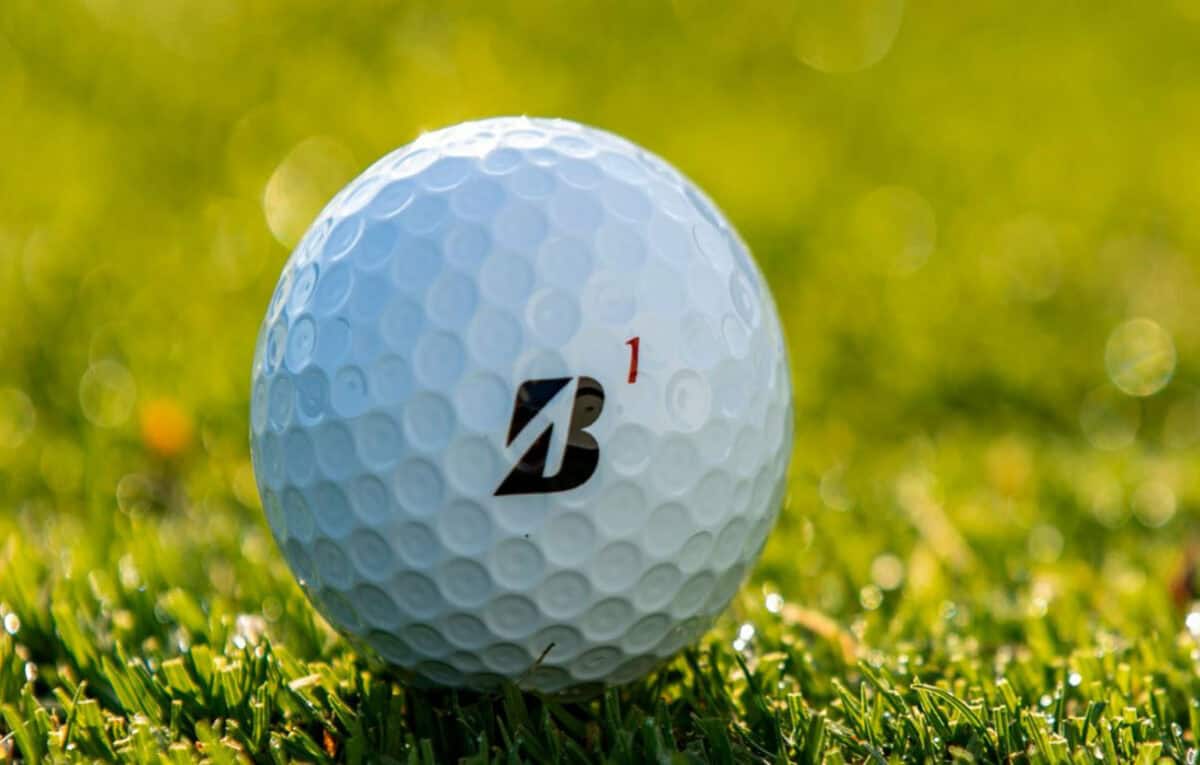What is the Hardest Golf Ball Made?
Golf ball construction has a significant effect on performance characteristics like distance, spin, durability, and feel.
Harder golf balls typically maximize driver distance but reduce iron spin and soft feel. This leads many players to wonder – just how hard and firm do golf balls come? What is the absolute hardest ball available?
Let’s examine golf ball composition factors that control hardness, check testing metrics like compression ratings, and look at some of the firmest balls engineered for elite players with the fastest swing speeds.

What Makes a Golf Ball Hard or Soft?
The hardness or softness of a golf ball stem primarily from two components:
- Core – The materials used in the center of the ball and their density control overall firmness. Harder materials like ionomers and metals increase hardness. Softer polybutadiene rubber reduces hardness.
- Cover – The outer cover also influences feel upon club impact. Softer urethane covers improve the feel while firmer surlyn adds hardness. Thicker covers soften the feel.
Varying core material properties and cover thickness allow manufacturers to produce golf balls across a wide spectrum of hardness and softness.
Measuring Golf Ball Hardness
Golf ball hardness is most commonly measured using compression ratings. Compression represents the amount a ball deforms when subjected to a standardized compression test device.
Key compression takeaways:
- Ratings range from below 40 (very soft) to over 100 (extremely hard).
- Recreational play balls have 50-80 compression. Tour caliber balls are 90-100.
- Harder balls compress less. Softer balls compress more under a given force.
This compression metric serves as an easy quantitative indicator of ball firmness.
Factors Favoring Harder Golf Balls
Here are the characteristics of firmer, higher-compression golf balls:
- Minimizes driver spin for maximized distance off the tee.
- Maintains energy and velocity better on longer shots.
- Reduces ball deformation and gear effect that can affect control.
- Generates a penetrating, boring ball flight that resists wind.
- Provides feedback and control for stronger swing speeds above 105 mph.
For elite players, these traits help optimize performance. But for many amateurs, extremely firm balls hinder play.

Drawbacks of Using Extra Hard Balls
While benefits exist in certain cases, extremely hard high compression balls also pose some downsides:
- Requires very fast club speeds to fully compress the ball at impact.
- Reduced iron shot spin makes holding greens difficult except for elite players.
- Very firm feel lacks touch needed for finesse shots around the green.
- Can exaggerate mishits and cause shots to fly offline if not struck purely.
- Increased wrist and elbow discomfort from the force required to compress balls.
Finding the right balance of firmness for your swing is key to optimizing performance with any golf ball.
The Hardest Golf Balls Available
The highest compression golf balls on the market designed for maximum hardness include:
- Bridgestone Tour B X – A 3-piece urethane ball with a 102 compression rating. The firmest model Bridgestone makes.
- Srixon Z-Star XV – Srixon’s fastest tour ball has a 90 compression rating. The dense core maximizes energy transfer at high speeds.
- Titleist Pro V1x Left Dash – A special order 106 compression Pro V1x created for elite players. One of the hardest balls ever produced.
- TaylorMade TP5x Pix – TaylorMade’s firmest TP5 model has a compression rating of 88. Designed for high swing speeds.
- Callaway Chrome Soft X Triple Track – Callaway’s highest compression Chrome Soft ball comes in at 90 for low spin and firm feel.
These represent the hardest commercially available new golf balls suited to highly skilled players.

Hardest Used Golf Balls
In terms of used or refurbished balls reclaimed from ranges and other sources, the hardest tend to be:
- Older distance balls from the 1990s are designed for 80+ compression.
- Refinished original Balata-covered wound balls.
- Dirty, worn older balls that have lost compression softness.
- Illegally hard balls from manufacturers not conforming to standards.
While range balls and very old used balls can reach the highest compression levels, the hardness comes from age and use rather than optimal design.
Firm Balls Must Match Swing Speed
The key takeaway regarding maximizing hardness in golf balls is properly matching compression rating to the player’s needs and capabilities.
Extra firm tour balls only optimize performance at clubhead speeds over 110 mph. Slower swing players actually lose distance and spin from balls that are too hard relative to their speed.
Being fit for proper ball construction ensures ideal launch, carry, and scoring ability. Finding the right balance of distance off the tee, spin on iron shots, and soft feel around the greens requires selecting appropriate compression aligned with your game.
Preferred Hardness Varies Across Shots
It’s also worth noting most golfers may prefer different compression suited for different clubs and shots:
- Softest compression optimized for partial wedges.
- Firmer balls for maximizing iron shot distance and penetration.
- Hardest high compression for the driver to boost speed and minimize spin.
Blend by using different firmness balls for tee shots, long irons, and greenside finesse pitches and chips.
Focus on Consistency
Rather than chasing the absolute hardest golf ball, focus instead on choosing a quality construction aligned with your needs and capabilities. Finding a ball you can compress consistently shot after shot enables playing with confidence.
With a model matched to your swing speed, strike, and preference, putting the optimal compression in play for each club helps lower scores. Don’t get fixated on marketing claims around maximum hardness.
Test Balls to Match Your Game
The only way to determine the ideal golf ball firmness for your game is to test compressions across the range and compare the performance results.
Monitoring factors like launch angle, spin rates, shot height consistency, distance, and feel dial in the right construction.
Let your specific needs and on-course results guide ball selection over fixating on the hardest or softest. With the properly fitted golf ball compression, you have one more tool towards improving your performance and shooting lower scores.
